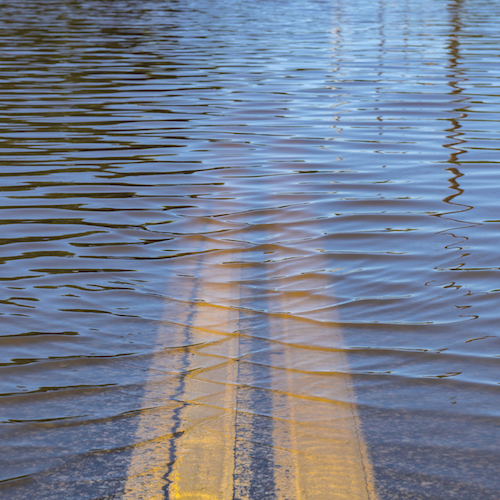
Flood waters driven by tropical storm Harvey are expected to have damaged as many as half a million cars in the Houston area. A majority of these cars are headed for the scrap yard, but some — probably many more than a few — will be cleaned up and resold. And buyers may not know that they’re laying out cash for vehicles that have been totaled and may now be uninsurable.
As vehicle owners make claims to their insurance companies, many of the vehicles that were flooded will be declared a total loss. When that happens, the vehicle title will indicate that the vehicle is a “salvage” vehicle. Salvage designations vary by state, and you may see other words like “flood,” “junk” or “lemon-law buyback” to indicate that the car has been declared a total or near-total loss by an insurance company.
But if the vehicle is taken out of state and retitled in another state, the new title may very well not indicate the salvage status. Following 2005’s Hurricane Katrina, thousands of rebuilt cars that had been declared total losses were sold to buyers who did not know they were buying salvage vehicles.
The U.S. Federal Trade Commission (FTC) has published a list of steps buyers can take to help determine if the vehicle they plan to buy has been damaged by flooding:
- Look for water stains, mildew, sand or silt under the carpet, floor mats, and dashboard, and in the wheel well where the spare is stored. Look for fogging inside the headlights and taillights.
- Do a smell test. A heavy aroma of cleaners and disinfectants is a sign that someone’s trying to mask a mold or odor problem.
- Get a vehicle history report. Check a trusted database service. There are reliable services that charge a small fee. The National Insurance Crime Bureau’s (NICB) free database lists flood damage and other information.
- Understand the difference between a “salvage title” and a “flood title.” A “salvage title” means the car was declared a total loss by an insurance company because of a serious accident or some other problems. A “flood title” means the car has damage from sitting in water deep enough to fill the engine compartment. The title status is part of a vehicle history report. Either way, every used car needs an inspection and records before you buy, but with salvage- and flood-titled cars, you need to be extra careful.
- Have your mechanic inspect the car’s mechanical and electrical components, and systems that contain fluids, for water contamination.
As long as a salvage or flood vehicle’s title clearly indicates its status and the vehicle checks out according to this list, buyers may want to go ahead and buy it. But first, it may be wise to check with your insurance company and lender, if you have one.
A salvage-title car is worth about half of its Kelley Blue Book value, according to Consumers Report. If you need a loan to buy the vehicle and if you think your insurance company will insure the car for what you expect to pay for it, you could be very wrong.
Most insurance companies are not eager to write comprehensive and collision coverage on salvage-titled vehicles because the insurer can’t be sure of the vehicle’s value or how complete the repairs are. Damage to the vehicle’s electrical system, for instance, may not surface for months and can be extremely hard to track down and expensive to repair.
Getting an auto loan without full collision and comprehensive coverage on the vehicle is essentially impossible. That means you have to pay cash, and the value to you if you try to resell the vehicle, expect to get around 30% of the Kelley Blue Book value.
Think of it this way: if you buy a salvage vehicle, be prepared to drive it until the wheels fall off with minimum insurance coverage. It is destined to become your new BFF.
Is Your Money Earning the Best Possible Rate? (Sponsor)
Let’s face it: If your money is just sitting in a checking account, you’re losing value every single day. With most checking accounts offering little to no interest, the cash you worked so hard to save is gradually being eroded by inflation.
However, by moving that money into a high-yield savings account, you can put your cash to work, growing steadily with little to no effort on your part. In just a few clicks, you can set up a high-yield savings account and start earning interest immediately.
There are plenty of reputable banks and online platforms that offer competitive rates, and many of them come with zero fees and no minimum balance requirements. Click here to see if you’re earning the best possible rate on your money!
Thank you for reading! Have some feedback for us?
Contact the 24/7 Wall St. editorial team.
 24/7 Wall St.
24/7 Wall St.


